Results
-
£67.99
Beside Still Waters - Neeck
This expressive piece is an excellent vehicle for teaching legato phrasing and lyrical style. The simple and reflective themes are pleasingly developed, which lead to a full ensemble climax, and fade with a warm and gentle ending. Perfect for that delicate, change-of-pace moment in your concert.
Estimated dispatch 7-14 working days
-
£25.00
Christmas Around The World
1. Good King Wenceslas / 2. Alle Jahre wieder / 3. Les anges dans nos campagnges / 4. Lasst und froh und munter sein / 5. In dulci Jubilo / 6. We Wish You A Merry Christmas / 7. Ssser die Glocken nie klingen / 8. March of The Three Kings / 9. O Little Town Of Bethlehem / 10. Stille Nacht, Heilige Nacht / 11. The First Nowell / 12. Deck The Halls / 13. Jingle Bells / 14. Still, Still, Still / 15. We Three Kings / 16. O Tannenbaum / 17. O Come, All Ye Faithful / 18. Kommet, Ihr Hirten / 19. While Shepherds Watched Their Flocks / 20. O Du Frhliche / 21. God Rest You Merry Gentlemen / 22. The Holly And The Ivy / 23. O Holy Night / 24. Hark, The Herald Angels Sing / 25. Joy To The World / 26. Ihr Kinderlein kommt / 27. Kling, Glckchen, Kling / 28. Am Weinachtsbaum die Lichter brennen / 29. Es ist ein Ros entsprungen / 30. Il est n le divin enfant / 31. Vom Himmel hoch da komm' ich her / 32. Leise rieselt der Schnee
Estimated dispatch 10-14 working days
-
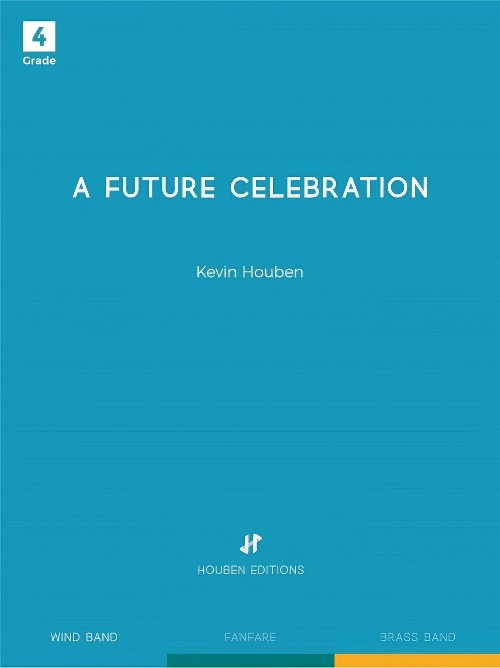 £104.00
£104.00A Future Celebration (Concert Band - Score and Parts) - Houben, Kevin
Future Celebration was composed on the occasion of the 125th anniversary of the Royal Socialist Wind Band 'De Toekomst' from Sint-Niklaas (Belgium). In this colourful compostion Kevin Houben succeeds in evoking the bustling textile and cigar industry of the nineteenth and twentieth century in this East Flemish city Sint-Niklaas. After all, these crafts were characteristic for the wealth they brought to the city. Still testimony of this are the 2 unique (niche)museums in Sint-Niklaas: the Knitwear museum and the Pipe and Tobacco museum. Even in times of great crises eg. during the Interbellum the city continued flourishing proving the unique collection of classified art deco houses, amongst others the former People's House, in which the Royal Socialist Wind Band still rehearse. This historic background of Sint-Niklaas and of the Wind Band in particular has been musically presented by Kevin Houben in Future Celebration. The brief, but energetic and powerful opening of the work by the brass instruments gives musical expression to Sint-Niklaas as a prosperous city. After the presentation of a majestic and lyrical theme by the woodwinds an allegro with a cheerful theme takes a look at the future, hopefully looking at the next milestones/ celebrations the city and its orchestra are still expecting in the future. Duration: 6.00
Estimated dispatch 7-14 working days
-
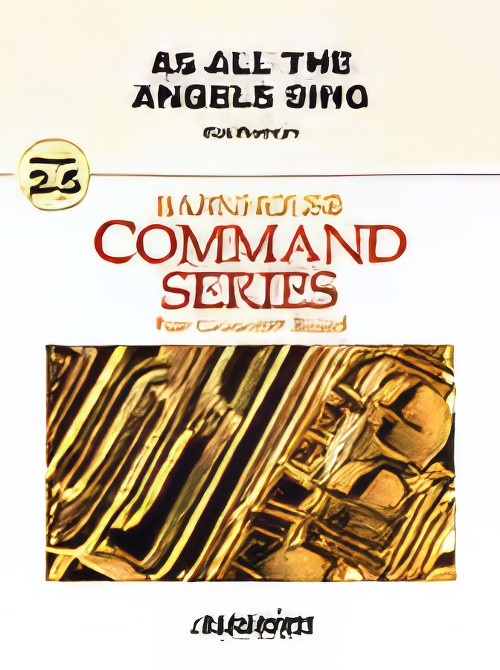 £59.00
£59.00As All the Angels Sing (Concert Band - Score and Parts) - Romeyn, Rob
Based on the traditional carol "Angels From The Realms of Glory," "As All The Angels Sing" is the perfect opening or closing statement for your holiday concert! The sparkling introductory theme is creatively enhanced by snippets of other festive, well known carols, leading to a heartfelt setting of "Still, Still, Still" that is simply beautiful. The music then ends as it began, festive and strong. Varied instrumental colors and contrasting styles are musically rewarding, and will make this selection a favorite of bands from younger levels all the way up to adult community groups. Let the holiday season begin! Duration: 2.30
Estimated dispatch 7-14 working days
-
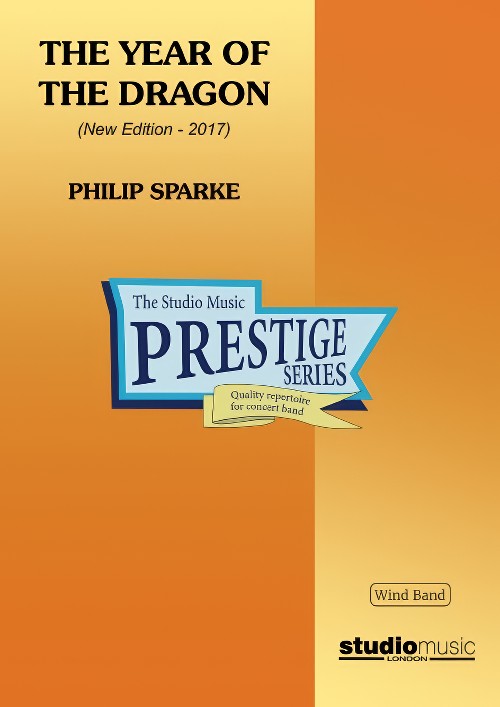 £37.95
£37.95The Year of the Dragon (Prestige Concert Band - Score only) - Sparke, Philip
The 2017 version of The Year of the Dragon was commissioned by the Siena Wind Orchestra and given its world premiere on June 17th 2017 in Bunkyo Civic Hall, Tokyo, conducted by the composer.The original wind band arrangement of The Year of the Dragon was made in 1985, a year after the composer wrote the brass band version. At that time he was still learning the intricacies of writing for wind band (and still is!) and in the 32 years which have elapsed since then, his approach to scoring for the medium has developed and, hopefully, improved.Here are the main differences between the two versions:In the 1980's, the wind band movement was much less international than it is now. British wind bands were still to some extent based on the military band tradition of the time, which tended to use rather smaller instrumentation than the then-dominant American university model. The new version embraces a much more international instrumentation, including low woodwinds and string bass, as well as an expanded percussion section.In the original version there was a touch of naivety in the way the composer wrote for the woodwinds; much of their articulation was transferred too literally from the brass version, resulting in some unidiomatic writing, which he has tried to improve in the new version.In addition to the above, Philip's own compositional style has matured and developed in the intervening 32 years. There are some passages in the original which he simply would not write today - not because they are 'wrong', but because his way of writing has changed. The new version is perhaps how he would have written it today, rather than simply dressing the original version in new clothes.The work is in three movements:Toccata opens with an arresting side drum figure and snatches of themes from various sections of the band, which try to develop until a broad and powerful theme from the middle of the band asserts itself. A central dance-like section soon gives way to the return of this theme, which subsides until faint echoes of the opening material fade to a close.Interlude takes the form of a sad and languid solo for alto saxophone. A chorale for the whole band introduces a brief spell of optimism but the saxophone solo returns to close the movement quietly.Finale is a real tour-de-force for the band with a stream of rapid semi-quavers running throughout the movement. The main theme is heroic and march-like but this is interspersed with lighter, more playful episodes. A distant fanfare to the sound of bells is introduced and this eventually returns to bring the work to a stirring close.
Estimated dispatch 7-14 working days
-
 £199.95
£199.95The Year of the Dragon (Prestige Concert Band - Score and Parts) - Sparke, Philip
The 2017 version of The Year of the Dragon was commissioned by the Siena Wind Orchestra and given its world premiere on June 17th 2017 in Bunkyo Civic Hall, Tokyo, conducted by the composer.The original wind band arrangement of The Year of the Dragon was made in 1985, a year after the composer wrote the brass band version. At that time he was still learning the intricacies of writing for wind band (and still is!) and in the 32 years which have elapsed since then, his approach to scoring for the medium has developed and, hopefully, improved.Here are the main differences between the two versions:In the 1980's, the wind band movement was much less international than it is now. British wind bands were still to some extent based on the military band tradition of the time, which tended to use rather smaller instrumentation than the then-dominant American university model. The new version embraces a much more international instrumentation, including low woodwinds and string bass, as well as an expanded percussion section.In the original version there was a touch of naivety in the way the composer wrote for the woodwinds; much of their articulation was transferred too literally from the brass version, resulting in some unidiomatic writing, which he has tried to improve in the new version.In addition to the above, Philip's own compositional style has matured and developed in the intervening 32 years. There are some passages in the original which he simply would not write today - not because they are 'wrong', but because his way of writing has changed. The new version is perhaps how he would have written it today, rather than simply dressing the original version in new clothes.The work is in three movements:Toccata opens with an arresting side drum figure and snatches of themes from various sections of the band, which try to develop until a broad and powerful theme from the middle of the band asserts itself. A central dance-like section soon gives way to the return of this theme, which subsides until faint echoes of the opening material fade to a close.Interlude takes the form of a sad and languid solo for alto saxophone. A chorale for the whole band introduces a brief spell of optimism but the saxophone solo returns to close the movement quietly.Finale is a real tour-de-force for the band with a stream of rapid semi-quavers running throughout the movement. The main theme is heroic and march-like but this is interspersed with lighter, more playful episodes. A distant fanfare to the sound of bells is introduced and this eventually returns to bring the work to a stirring close.
Estimated dispatch 7-14 working days
-
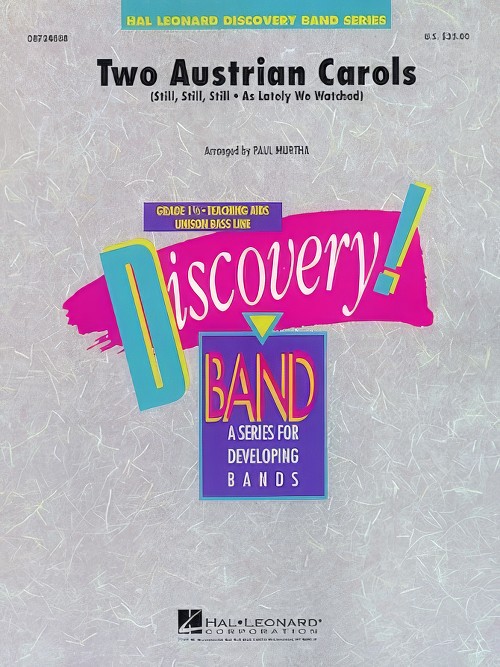 £42.50
£42.50Two Austrian Carols (Concert Band - Score and Parts) - Murtha, Paul
Paul Murtha has created a short and easy medley of two classic carols. Including Still, Still, Still and As Lately We Watched this arrangement will be easy to prepare and a joy to perform.
Estimated dispatch 7-14 working days
-
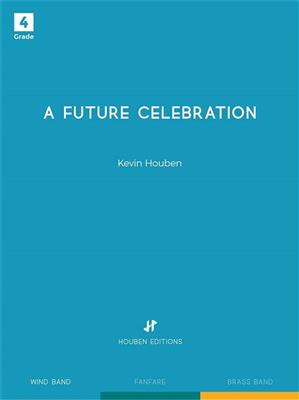 £104.00
£104.00A Future Celebration - Kevin Houben
Future Celebration was composed on the occasion of the 125th anniversary of the Royal Socialist Wind Band 'De Toekomst' from Sint-Niklaas (Belgium). In this colourful compostion Kevin Houben succeeds in evoking the bustling textile and cigar industry of the nineteenth and twentieth century in this East Flemish city Sint-Niklaas.After all, these crafts were characteristic for the wealth they brought to the city. Still testimony of this are the 2 unique (niche)museums in Sint-Niklaas: the Knitwear museum and the Pipe and Tobacco museum. Even in times of great crises eg. during the Interbellum the city continued flourishing proving the unique collection of classified art deco houses, amongst others the former People's House, in which the Royal Socialist Wind Band still rehearse.This historic background of Sint-Niklaas and of the Wind Band in particular has been musically presented by Kevin Houben in Future Celebration. The brief, but energetic and powerful opening of the work by the brass instruments gives musical expression to Sint-Niklaas as a prosperous city. After the presentation of a majestic and lyrical theme by the woodwinds an allegro with a cheerful theme takes a look at the future, hopefully looking at the next milestones/ celebrations the city and its orchestra are still expecting in the future.
Estimated dispatch 7-14 working days
-
£82.95
Festival Of Carols In 6/8 Time
This festive holiday medley of traditional carols is arranged into 6/8 time throughout. Using holiday favorites such as "In Dolce Jubilo", "The Sussex Carol", "I Saw Three Ships", "Three Kings Of Orient", "Still, Still, Still", "Jesu Bambino", and "Here We Come a-Wassailing", Gary Fagan gives us a wonderful musical addition to the holiday repertoire as well as a valuable teaching tool. The use of recognizable melodies engages prior knowledge to teach and reinforce the concept of compound meter. Highly recommended!
Estimated dispatch 7-14 working days
-
£89.99
Little Christmas Suite - Robert Finn
This Little Christmas Suite, arranged for concert band by Robert Finn, contains three European Christmas carols of uncertain origin. The three movements Baile de Nadal (from Spain), Still, Still, Still (from Germany) and The First Noel (from England) create a delightful suite for any concert band and can also be performed with a choir.
Estimated dispatch 7-14 working days
